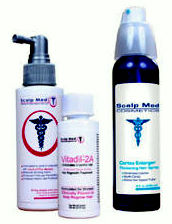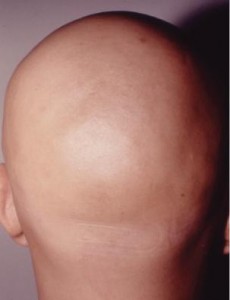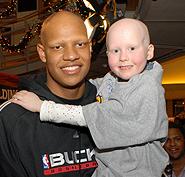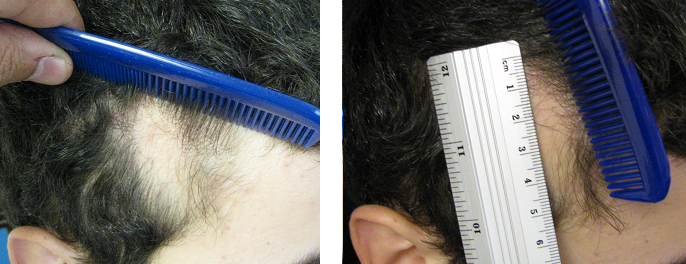Archive for the ‘California hair transplant’ Category
Wednesday, November 25th, 2009

US Hair Transplant, a respected leader in hair restoration surgeries, will be holding a grand opening of a new San Diego Hair Transplant Center sometime in early 2010. With hair restoration centers already well established in Encino, Beverly Hills, and Orange County (Foothill Ranch), Dr. Parsa Mohebi and his staff plan on providing their self-image enhancing services to residents of America’s Finest City.
“San Diego is like a sister city of L.A. And I know from conversations with many of our patients that there is a demand for quality hair restoration clinics in the area” said Dr. Parsa Mohebi, Medical Director, US Hair Transplant, “People want to look their best, and at the same time, have a natural-looking appearance.”
US Hair Transplant currently serves a handful of San Diego-area residents, but establishing an office in the southern most part of the Golden State would, Dr. Mohebi says, be a more convenient resource for his clients, and also convey the message that US Hair Restoration is willing to branch out to meet the growing needs of its prospective clientele.
“Hair restoration is a wonderful solution and is a way for people with hair loss to feel good about themselves again, without compromising good health,” adds Reyes Mendoza, Public Relations, US Hair Restoration.
Beginning in the early 1990s, surgical hair restoration proved to be a successful solution for men and women suffering hair loss. Since then, modern technology and dedicated study by doctors and scientists involved in the hair transplant industry have made hair restoration a safe and rewarding option for people around the world.
Currently, due to the current state of the economy, US Hair Restoration is offering 20% off its standard cost of hair transplants and 0% financing for two years on a standby basis until December 31, 2009, to achieve their its goal of being able to provide quality hair transplants, with affordable prices of hair restoration, for all people. Hotel stay is provided for one night along with transportation to and from the hotel for anyone traveling over 50 miles to a US Hair Restoration office.
Tags: California hair transplant, california hair transplant center, hair transplant, hair transplant center, la jolla hair transplant, la jolla hair transplant center, poway hair transplant, poway hair transplant center, san diego hair transplant, san diego hair transplant center
Posted in California hair transplant, hair transplant | No Comments »
Monday, November 23rd, 2009
Q:
Hello Dr. Mohebi,
It’s my sixth day after I got my hair transplant in Los Angeles and all seems to be healing and on track. The other day, when I was shampooing, I noticed some follicles. Maybe about six of them. Is this something to be concerned about?
What I’m pressing about is the staples area of my head. It doesn’t look infected or have a lot of inflammation, but it is really sensitive, meaning that I feel pain each time I hit that area of my head on something or just swipe my head past a car head cushion. Also, with not much shock, the pain level has increased as I’ve taken less anti-inflammatory drugs. Are there any over the counter pills you’d recommend. Whether topical or oral drugs, it doesn’t matter to me.
All I know is, I’m really stoked about getting these staples removed in a few months! Can’t wait until they’re off.
Thanks,
A:
Dear Joe,
After a period of time, the closed donor wound sensitivity to pain and its tenderness will decrease. But after a few days, the patient might feel some pain in the donor area while on medication. If the case happens to be that the transplant donor area is becoming more sensitive, pay me a visit and I’ll take a look at your donor area to make sure its healing properly.
Yours truly,
Tags: Anti-Inflammatory, Donor Wound, Follicles, Healing, Inflammation, Pain Killers
Posted in California hair transplant, hair transplant, men hair restoration, Orange County hair transplant | No Comments »
Thursday, November 19th, 2009

Q:
Not too long ago, I had a hair transplant (using FUE). Things were OK until several months after the transplant. I spent some time having fun in the sun, and it was maybe close to triple digit degrees outdoors. As soon as I got back to my house, I noticed my scalp in the transplanted area had turned white. It looked like the skin on my head had been scorched. But I didn’t think it was a big deal and I kept on using the Minoxidil with Betaderm spray, which my doctor highly recommended.
A few weeks later, the top of my head (which had been grafted) began to peel and the skin fell off (like a sun burn). And there were a few transplanted hairs which fell off as well, with the skin. This really alarmed me. After about eight weeks, the scalp seems to have healed, although there is some redness in places; but, overall, it seems to be OK. But, I’m a bit worried about the condition of my after-playing-in-the-sun scalp. I know it was probably a sun burn, but I just hope my grafts weren’t damaged beyond repair. I’ve done some research on skin consequences of sun burn, but I wonder if the grafts can ever fully recover from the exposure to the ultra-violet rays. I know if my skin becomes more tan, it’s OK. But about my grafts, I’m really concerned about them.
I need answers, doc.
Yours truly,
A beach bum with a hair transplant
A:
Hey beach bum,
Skin and scalp which has been exposed to the sun’s rays for long periods of time damage both native hairs and transplanted hair. The consequences can be especially harmful if a person who has had a hair transplanted is not under an umbrella or is not wearing a hat of some sort. The scalp skin could be damaged that way. It is best to stay out of the sun after a few minutes, at most. For the first six months, hair transplant patients may want to use sunscreen or wear a hat to prevent hair loss and to guard against permanent damage to hair follicles.
For those who don’t like to wear hats or other types of protective head wear ought to guard their hair as if their financial stability depended on it. Make sure your hair density increases to the point in which your hair follicles cover your entire scalp and so the scalp skin is not exposed to the sun’s scorching rays (especially during summer).
I can’t give you a verdict on whether your newly transplanted hair is permanently damaged. I’m sure I don’t have to tell you this, but I’ll say it anyway in case there are people reading this blog who are in a similar situation: from now on, be very careful about your scalp’s sun exposure. And just kick-back and wait a while to see if the damaged hair grows back.
Remember, after hair transplant care is very important, if not crucial to the longevity of your hair restoration results.
Tags: after hair transplant, complications, fue, hair loss, hair transplant surgery, men hair loss, sun exposure
Posted in Bakersfield hair transplant, California hair transplant, hair transplant, men hair restoration, Newport Beach hair transplant, Orange County hair transplant | No Comments »
Saturday, November 14th, 2009

In the latest issue of the Journal of Internal Medicine, a new research study was published: “A Rare Complication: New Hair Growth Around Healing Wounds.” This study is related to Dr. Mohebi’s personal research at Johns Hopkins Medical Institute on gene therapy techniques and wound healing and how it affected the growth of mice hair.
The journal study was about a person who had hair growth surrounding a healing wound at Guangxi Medical University in Nanning, China.
The doctors involved in the study mention an incident in which hair growth occurred around a wound during the process of wound healing. Hair growth after wound healing is an atypical occurrence. This is the first time such an event had ever been recorded in scientific literature.
The doctors concluded that the wounds damaged the hair follicles and epidermis, but that it was possible for both to repair themselves if there was a suitable physical and chemical micro-environment. The doctors say that this new hypothesis may very well lead to new methods of managing hair loss, tissue engineering, and the regeneration of other organs.
At the laboratory of Johns Hopkins Medical Institute, and as part of my overall research, I did a major investigative study on hair growth as a byproduct of wound healing. On a few rats, after witnessing wound healing, to my delight, I found that some gene therapy techniques stimulated the hair growth.
My attention was on hair growth only and, coincidentally, our results matched other hair growth-wound healing studies, during 2005 to 2006. At the University of Pennsylvania, Dr. Cotsarelis, along with his contemporaries, first made public a study on the relationship between wound healing and hair growth through activation of the molecular pathway WNT.
Other similar studies have called attention to the fact that hair restoration through tissue engineering, hair multiplication, and gene therapy might one day happen and that we just may have a breakthrough a lot sooner than we expected all these years.
Parsa Mohebi, M.D.
Medical Director
US Hair Transplant
Tags: gene therapy, hair growth, hair loss, hair restoration, wound healing
Posted in California hair transplant, hair transplant, men hair restoration, women hair loss | No Comments »
Tuesday, November 10th, 2009
 Q: Q:
Dear Parsa Mohebi,
I hope you’re doing great. I hope you also remember me – it’s —-. I visited your office in January in Mission Viejo, California. I am currently in Dubai! Thank you for the letter which you sent me regarding the tests I should take. I appreciate the time you took out for me. I have taken the tests and wait for the results.
I wanted to ask you a question regarding the hair growth. Recently I was going through some websites and landed on a product called ScalpMed. I was quite alarmed at how this product worked (as it says it does). I am aware that there are numerous type of products available in the market but for some reason this really got me interested. Can you please have a look at it and advice me whether or not to take it seriously?
I appreciate for your time. Looking forward to hear from you!
A:
The hair loss treatment industry is a multi-million dollar business. As such, there are usually companies offering much cheaper, short-cut type products which claim to have the same benefits as more mainstream hair restoration methods.
“I’ve tried hair loss products, but it didn’t work. I don’t think I’ll try it again.”
Most likely, that’s not a line you’ll hear in a commercial for a hair loss product on late night television. But that’s what I think of most of these infomerical-type hair loss treatment goods.
Given the high demand, hair loss products are numerous, but not always effective.
If patients ask me about hair loss products, I like to post them on this blog, as I’m sure there are a lot of people interested in reading about it. Scalp Med is a company which makes numerous products on hair thickening and hair loss treatment. Scalp Med likes to assemble different types of kits for their prospective customers, including a Detoxifying Cleanser Kit, Scalp Med for Women, and Mega-Multi Vitamins.
Like other companies in the hair loss industry, Scalp Med’s advertisements go as far as to say that they are FDA-approved. Any Joe Schmo can find photographs, legit testimonies, and other types of “proof” from balding clients who try to promote Scalp Med’s product.
There are various types of Scalp Med product, including topical Vitadil-5A for men, Vitadil-2A for women, topical NutriSol-RM, and Cortex Enlarger hair thickening spray. The first two Vitadils are topical solutions which contain minoxidil (also Rogaine’s key component). The claim Scalp Med makes is that they have formulated a unique delivery agent which is supposed to increase the absorption of minoxidil in women and men.
For the Scalp Med products NutriSol-RM and Cortex Enlarger thickening spray, we are sort of left in the dark about what exactly is contained in them. Except for minoxidil, the other ingredients contained in these products haven’t been proven to aid in the growth of hair and the health of hair. It’s important to note, the cleansing agents contained in a lot of these types of products do nothing to help a person grow their hair. No matter how clean hair is, it doesn’t help it to grow. Don’t believe the advertising.
I strongly urge you to find out whether your hair loss is treatable. It may stem from some other health condition instead of it being hereditary. If you’re a woman, and you know you have a typical type of female patterned hair baldness, then Rogaine may help.
Sincerely,
Dr. Mohebi
Tags: hair cleanser, hair loss product, hair volumizer, minoxidil, rogaine, Scalp Med, ScalpMed
Posted in California hair transplant, hair loss medication, hair loss products, men hair restoration, women hair loss | No Comments »
Thursday, October 22nd, 2009
 Q: Q:
I am a 26-year-old woman.Not too long ago, I felt as if I owned the world. Then I got alopecia totalis, and now I’d rather hide, so I understand what it feels like to be a freak. But, remember, we have nothing to be ashamed about. This condition is more widespread than we think and people are more understanding than we give them credit for. People like us can live normal, happy lives, although maybe we may stand out in a crowd. Since I acquired alopecia totalis, lots of my people have told me they know someone with my disease. There are more people than we know who have alopecia totalis, like NBA player Charlie Villanueva. Although we don’t look exactly like other people, if we learn to overcome our own self-doubts we can be phenomenally successful people.
I’m a female. And it is my deepest desire to show the world, and especially other women suffering form alopecia totalis, that I can live with self-respect and high self-regard. I want to make it one of my goals to inspire young girls with alopecia totalis and help them to achieve their dreams.
I’m still in my twenties and I know I haven’t experienced the more serious consequences of alopecia totalis. I’m determined to maintain a positive outlook and I believe I will even later on in life. There’s a lot more to a human being than their hair style. In fact, maybe having alopecia totalis will help us focus more on our character and integrity than superficial appearances. If I had the choice of being bald and fit, or with a full head of hair and obese, I choose the former. I want to be a good steward of my physical body.
I love all of you. There is more to you than being bald. Much more. Don’t allow yourselves to feel like you’re so different from the world. Let me remind you that your closest buddies and those in your family who really love you, they see you for your true self. You don’t have to resort to wearing a wig or some other disguise to be accepted.
A:
What a wonderful attitude! Alopecia Universalis (AU) treatment can be complex and sometimes not even possible. If you visited one of our California Hair Restoration Offices and met some of my patients, you’d be dumbfounded by how crippled and saddened they feel at the loss of their hair.
A message I always give to my patients is that it is beneficial to look good physically. I say if it’s possible for a person to alter their appearance in a way that’s socially acceptable (e.g., getting a swastika tatoo on one’s face wouldn’t be), then do it. But if it’s not something that can be changed, know that you were made that way for a reason, and our differences are what make us unique and human.
Tags: alopecia universalis, Alopeica Areata, AU, bald is beautiful
Posted in California hair transplant, women hair loss | No Comments »
Saturday, October 17th, 2009
 Temporal triangular alopecia also known as TTA is a congenital hair loss condition in which the patient had a limited balding area on his temples. The condition is assumed to be congenital and is generally obvious since birth. The balding spot may contain normal numbers of hairs, but they are all vellus and generally not visible. Temporal triangular alopecia also known as TTA is a congenital hair loss condition in which the patient had a limited balding area on his temples. The condition is assumed to be congenital and is generally obvious since birth. The balding spot may contain normal numbers of hairs, but they are all vellus and generally not visible.
Congenital temporal triangular alopecia is considered a nonscarring alopecia and if biopsied should not be mistaken for Cicatricial alopecia. TTA respond well to hair transplantation and there are some studies that patient were treated with hair transplant surgery successfully with adequate coverage.
The condition could be treated by a hair restoration surgery at any age. We at the California offices of US Hair Restoration offer treatments for congenital temporal trangular alopecia.
Tags: congenital triangular alopecia, hair loss, hair loss treatment, hair transplant surgery, patchy hair loss, temporal triangular alopecia, TTA
Posted in California hair transplant, hair transplant | No Comments »
Wednesday, October 7th, 2009
 In a recent email sent to our office from a recent patient, he writes in regards to his scalp evaluation and regarding Propecia (Finasteride). He asks, “Could finasteride worsen the hairline due to the rise of testosterone?” and, “if there’s any safe and minor treatments to slow the progress of maturation or reverse it that you would recommend at this stage?” In a recent email sent to our office from a recent patient, he writes in regards to his scalp evaluation and regarding Propecia (Finasteride). He asks, “Could finasteride worsen the hairline due to the rise of testosterone?” and, “if there’s any safe and minor treatments to slow the progress of maturation or reverse it that you would recommend at this stage?”
Early stages of male patterned hair loss may not always be obvious enough to be differentiated from normal levels of miniaturized hair during scalp microscopic evaluation. Propecia (finasteride) is still the most recommended hair loss medication to prevent additional balding. Some patients have even been prescribed Propecia without proper diagnosis or documentation of their hair loss condition making it difficult to tell if they have gotten better since they started or worsened.
Propecia (finasteride) is designed to block DHT (Dihydrotestosterone) which is the main cause of male patterned hair loss. With this in mind, finasteride cannot deteriorate your hair loss or cause changes in the hairline. Maturation of the hairline is normal in all men and should not be confused with balding. We also do not have any further recommendation on medications that can stop the maturation of the hairline.
Tags: beverly hills, Beverly Hills Hair Restoration, finasteride, hair line, hair loss, hair transplant surgery, hairline maturation, hairline recession, male patterned hairloss, men hair loss, miniaturization, testosterone, young patients with hair loss
Posted in Bakersfield hair transplant, California hair transplant, hair transplant, men hair restoration, Newport Beach hair transplant, Orange County hair transplant | No Comments »
Thursday, October 1st, 2009
 In a recent article published in Dermatologic Surgery Journal, Dr. Nausbaum et Al discusses naturally occurring female hairlines. His study was based on a large panel of normal women for the purpose of comparing and contrasting hairline variables to attain the perfect female hairline. Given that male hair restoration has almost always been the focus of hair restoration this new information can help benefit women who are candidates for hair transplant surgery. In a recent article published in Dermatologic Surgery Journal, Dr. Nausbaum et Al discusses naturally occurring female hairlines. His study was based on a large panel of normal women for the purpose of comparing and contrasting hairline variables to attain the perfect female hairline. Given that male hair restoration has almost always been the focus of hair restoration this new information can help benefit women who are candidates for hair transplant surgery.
The author came up with a guide or type of blueprint to help determine the best hairline for a woman. This guide was based on the average recorded parameters in women with healthy, non-balding hair. Among a panel of 360 women, the most dominant feature found in 81% of the women was in fact the presence of the widow’s peak. In addition, around 90% of these women also showed lateral mounds.
It’s great to know that there is now a bigger emphasis in hair restoration for women with more viable information and techniques to help solve their hair loss. Our hair transplant surgical offices already specialize in female hairline reconstruction in women suffering from female patterned hair loss or male patterned hair loss. This technique has also been applied on transgender (male to female) patients to help soften and alter their masculine features.
We at our California offices of US Hair Restoration perform transgender hair transplants regularly and I personally believe that hair restoration is one of the most key procedures in sex reassignments process for transsexuals.
Tags: female hair line, female hair transplant, female hairline, hair loss treatment, hair transplant surgery, Los Angeles hair transplant, men hair loss, natural female hairline, transgender, transgender hair transplant, transsexual, widow's peak, woman hair restoration, women hair loss
Posted in California hair transplant | No Comments »
Tuesday, September 15th, 2009

As with any surgical procedure, you would have to worry about certain side effects or tedious maintenance. We are asked by every potential surgical patient, “When can I go back to work after my hair transplant surgery?”
Downtime doesn’t only apply to the amount of time you would spend away from your office or how soon you can return. This all depends on the type of work that you do, whether or not you can use a hat, how sensitive the issue of your hair transplant is and whether or not you want to keep it a secret.
We have a few follow up dates after the hair transplant surgery in our California Hair Transplant Offices and each must be completed. On the day after surgery, all patients must have a hair wash done in office to best instruct the patient. We make sure to clean the patient as thoroughly as possible without damaging the hair grafts in a professional and comfortable manner. We make sure the patient understands that scabbing and redness must be dealt with as soon as possible.
Patients are most concerned about how they will look the first few days. Redness and swelling are the most common side effect of the surgery and can last 4-5 days after the surgery. Patients can choose to wear a hat to cover the transplanted area from plain site.
On larger hair transplant cases, the swelling may actually progress to the eyebrow area or even the eyelids and under eyes. 5 to 6 days is all it should take for this kind of swelling to go down, generally. The swelling is most always triggered by large (2500 graft surgery) or mega-session (3000+ graft surgery) procedures but is almost undetectable on smaller cases.
The final concern or issue after hair transplant surgery is the visual aspect of the existing hair. Most cases, we trim the hair in both the recipient and donor area (0.5 to 2cm) and it will stay at about that length for 2 to 3 weeks. In about 90% of patients that undergo surgery, the transplant hair will fall out within the first 3 weeks. This means will look like they did before hair transplant surgery. By this point, there should not be any swelling or redness. Staples and/ or sutures are removed in less than 2 weeks after surgery and the transplanted hair follicles will then go into their resting phase until they are ready to grow again.
Tags: after hair restoration surgery, after hair transplant, complications, hair transplant, hair transplant surgery, high grade baldness, Los Angeles Hair Transplant Center, low grade baldness, male patterned hairloss, men hair loss, redness after hair transplant, swelling after hair transplant, us hair restoration
Posted in California hair transplant, hair transplant | No Comments »
|
|










